Simparica Trio Chewable Tablets
Simparica Trio Chewable Tablets contain sarolaner, moxidectin and pyrantel embonate. It is an endectocide combination for dogs effective on ticks, fleas, intestinal nematodes and heartworms.
Description
Simparica Trio Chewable Tablets
Sarolaner, Moxidectin, Pyrental Tablets for Dogs
Manufactured/ Marketed by: Zoetis India Limited
Doses form: Tablets
Presentation:
Blister pack of 1, 3 or 6 tablets in a mono carton with package insert
Available for weight ranges of 1.25-2.5 kg, >2.5-5 kg, >5-10 kg, >10-20 kg, >20-40 kg and >40-60 kg
Not all pack sizes may be available for marketing.
Ingredients & Composition:
Each tablet contains active substances:
Tablet Sarolaner Moxidectin Pyrantel embonate
1.25-2.5 kg 3 mg 0.06 mg 12.5 mg
>2.5-5 kg 6 mg 0.12 mg 25 mg
>5-10 kg 12 mg 0.24 mg 50 mg
>10-20 kg 24 mg 0.48 mg 100 mg
>20-40 kg 48 mg 0.96 mg 200 mg
>40-60 kg 72 mg 1.44 mg 300 mg
Excipients:
Butylhydroxytoluene (E321, 0.018%).
Colorants:
Allura Red (E129), Sunset Yellow FCF (E110), Indigo Carmine (E132).
It is a reddish-brown colored, pentagon-shaped tablet. It comes with rounded edges. The sarolaner strength is embossed on one face of the tablet.
Description:
Simparica Trio Chewable Tablets contain sarolaner, moxidectin and pyrantel embonate. It is an endectocide combination for dogs effective on ticks, fleas, intestinal nematodes and heartworms.
Class: Endectocide / Parasiticide
Indication / Uses / Benefits:
For dogs with mixed external and internal parasite infestations or those who may develop them. This is indicated when usage against ticks or fleas and gastrointestinal nematodes are advised at the same time. The veterinary pharmaceutical medication is also concurrently effective in preventing both angiostrongylosis and dirofilariasis (heartworm disease).
Ectoparasites
For the treatment of tick infestations. It kills Ixodes hexagonus, Ixodes ricinus, and Rhipicephalus sanguineus ticks immediately and persistently for five weeks, and it kills Dermacentor reticulatus ticks for four weeks.
For the treatment of flea infestations (Ctenocephalides felis and Ctenocephalides canis). The veterinary pharmaceutical product can be used as a component of a therapy plan for the management of flea allergy dermatitis (FAD). It has immediate and persistent flea killing activity against new infestations for 5 weeks.
Gastrointestinal nematodes
For the treatment of gastrointestinal roundworm and hookworm infections:
Toxocara canis immature adults (L5) and adults;
Ancylostoma caninum L4 larvae, L5 larvae (immature adults) and adults;
Toxascaris leonina adults;
Uncinaria stenocephala adults.
Other nematodes
For the prevention of dirofilariasis /heartworm disease (Dirofilaria immitis);
To lower the level of infection with immature adult (L5) stages of Angiostrongylus vasorum in order to prevent angiostrongylosis.
Dosage and Administration:
It should be administered at a dose of 1.2- 2.4 mg/kg of sarolaner, 0.024-0.048 mg/kg of moxidectin and 5-10 mg/kg of pyrantel embonate.
Or 1 tablet of respective bodyweight range.
For dogs weighing more than 60 kg use appropriate combination of tablets.
Ticks on the animal before the product is administered or those from fresh infestations after the first use of the product are killed within 48 hours.
For fleas, it starts working 12 to 24 hours after attachment and lasts for five weeks. Within eight hours of dosing, fleas on the animal are killed that are already present. It reduces environmental flea contamination in locations where the dog has access by killing newly emerging fleas on the dog before they can lay eggs.
Methods of Administration:
Simparica Chewable Tablets can be administered with or without food.
Target species:
For Dogs Only
Advice on correct administration:
When offered by the owner, Simparica Trio tablets are tasty and quickly eaten by the majority of dogs. The tablet can also be given with food or directly into the dog’s mouth if it is not willingly swallowed by the animal. It is not advisable to divide the tablets.
Treatment schedule:
A veterinarian’s diagnosis, the local epidemiological situation, and/or the epidemiological situation of other regions the dog has visited or will visit should all be taken into account when determining the recommended course of therapy. Any additional administrations of the product must adhere to the minimum 1-month interval schedule if, in the opinion of the veterinarian, they are necessary.
The product should only be used in dogs when treatment of ticks/ fleas and gastrointestinal nematodes is indicated at the same time. In the absence of the risk of mixed co-infestation, a narrower spectrum parasiticide should be used.
Treatment of flea and tick infestations and gastrointestinal nematodes:
The veterinary medicinal product can be used as part of the seasonal treatment of fleas and ticks (replacing treatment with a mono-active flea and tick product) in dogs with diagnosed concurrent gastrointestinal nematode infections. A single treatment is efficacious for the treatment of gastrointestinal nematodes. After treatment of the nematode infections, further flea and tick treatment should be continued with a mono-active product.
Prevention of heartworm disease and angiostrongylosis:
A single administration also prevents lungworm disease (by reducing the immature adults (L5) of A. vasorum) and heartworm disease (D. immitis) for one month. When the product replaces another lungworm or heartworm preventive product, the first dose of the product should be given within a month of the last dose of the former veterinary medicinal product. In endemic areas, dogs should receive lungworm and/or heartworm more preventive treatments at monthly intervals. It is recommended that heartworm prevention treatment should be continued until at least 1 month after the last exposure to mosquitoes.
Contraindications:
Do not use in cases of hypersensitivity to the active substances or to any of the excipients.
Adverse reactions:
Gastrointestinal signs such as vomiting and diarrhoea, and systemic disorders such as lethargy, anorexia/inappetence may occur in very rare cases based on post-marketing safety experience. In most cases these signs are mild and transient.
Neurological signs such as tremor, ataxia or convulsion may occur in very rare cases based on post-marketing safety experience. In most cases these signs are transient.
The frequency of adverse reactions is defined using the following convention:
• very common (more than 1 in 10 animals treated displaying adverse reaction(s))
• common (more than 1 but less than 10 animals in 100 animals treated)
• uncommon (more than 1 but less than 10 animals in 1,000 animals treated)
• rare (more than 1 but less than 10 animals in 10,000 animals treated)
• very rare (less than 1 animal in 10,000 animals treated, including isolated reports).
If you notice any side effects, even those not already listed in this package leaflet or you think that the medicine has not worked, please inform your veterinary surgeon.
Overdose (symptoms, emergency procedures, antidotes):
No adverse reactions were observed in 8-weeks old healthy puppies administered with up to 5 times the maximum recommended dose for 7 consecutive monthly administrations.
In a laboratory study, the product was well tolerated in dogs with a deficient multidrug-resistance-protein 1 (MDRI-/-) following single oral administration at 3 times the recommended dose. After a single administration of 5 times the maximum recommended dose to this sensitive dog breed, transient ataxia and/or muscle fasciculation were observed.
Special warning(s):
Special warnings for each target species:
Ticks and fleas need to start feeding on the host to become exposed to sarolaner; therefore, the transmission of infectious parasite-borne diseases cannot be excluded.
This veterinary medicinal product is not effective against adult D. immitis. However, accidental administration to dogs infected with adult heartworms should not pose safety concerns. Dogs in areas endemic for heartworm (or those which have travelled to endemic areas) may be infected with adult heartworms. Maintenance of the efficacy of macrocyclic lactones is critical for Dirofilaria immitis control. To minimise the risk of resistance selection, it is recommended that dogs should be checked for both circulating antigens and blood microfilariae at the beginning of each season of preventative treatment. Only negative animals should be treated.
Parasite resistance to any particular class of parasiticides may develop following the frequent, repeated use of a product of that class. Therefore, the use of this product should be based on the assessment of each individual case and on local epidemiological information about the current susceptibility of the target species in order to limit the possibility of a future selection for resistance.
Interaction with other medicines:
Interaction with other medicinal products and other forms of interaction is not known.
Macrocyclic lactones including moxidectin have been shown to be substrates for p-glycoprotein. Therefore, during treatment with the veterinary medicinal product, other products that can inhibit p-glycoprotein (e.g. cyclosporine, ketoconazole, spinosad, verapamil) should only be used concomitantly according to the benefit-risk assessment of the responsible veterinarian.
Safety: Age / Pregnancy:
The safety of the veterinary medicinal product has not been established during pregnancy and lactation or in dogs intended for breeding. The use in these animals is not recommended.
In the absence of available data, treatment of puppies less than 8 weeks of age and/or dogs less than 1.25 kg bodyweight should be based on a benefit-risk assessment by the responsible veterinarian.
The product was well tolerated in dogs with a deficient multidrug-resistance-protein 1 (MDR1 -/-). However, in such sensitive breeds (which may include, but not necessarily limited to, Collies and related breeds), the recommended dose should be strictly observed.
Withdrawal period(s):
Not applicable.
Pharmaceutical precautions / Instructions:
Keep out of the sight and reach of children. Store below 30 °C. Do not use this veterinary medicinal product after the expiry date which is stated on the carton and blister after EXP.
Special precautions to be taken by the person administering the veterinary medicinal product to animals:
Wash hands after handling the product.
The accidental ingestion of the product may potentially result in adverse effects, such as transient excitatory neurological signs. To prevent children from accessing the product, only one chewable tablet at a time should be removed from the blister pack and only when required. The blister pack should then be returned into the carton immediately after use and the carton should be stored out of the sight and reach of children. In case of accidental ingestion, seek medical advice immediately and show the package leaflet or label to the physician.
Medicines should not be disposed of via wastewater or household waste. Ask your veterinary surgeon how to dispose of medicines no longer required. These measures should help to protect the environment.
Detailed information on this veterinary medicinal product is available on the website of the European Medicines Agency (http://www.ema.europa.eu/).
Substitute: Updating Soon
Compare with Bravecto Tablet Chew (Fluralaner), NexGard Tablets (Afoxolaner),
Only logged in customers who have purchased this product may leave a review.


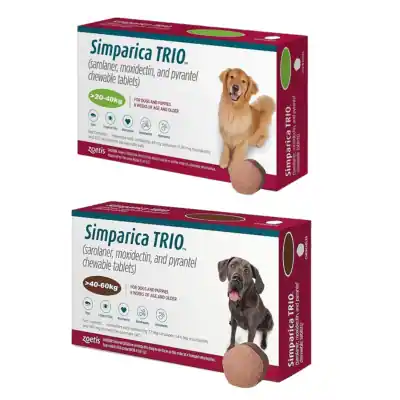
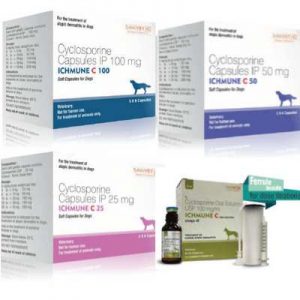
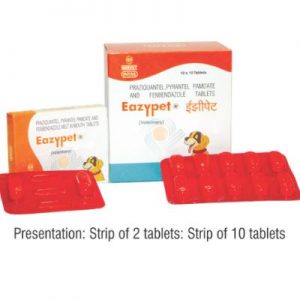
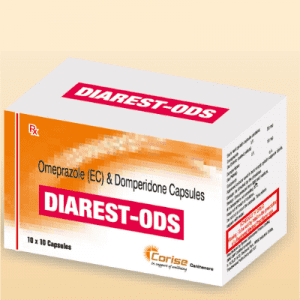
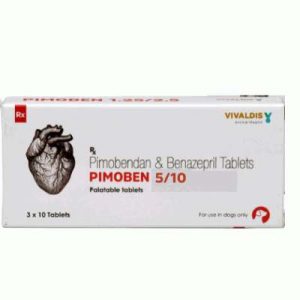
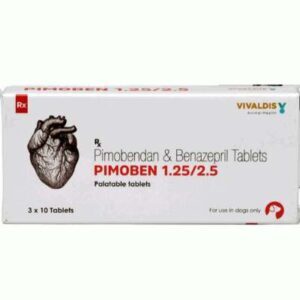
Reviews
There are no reviews yet.